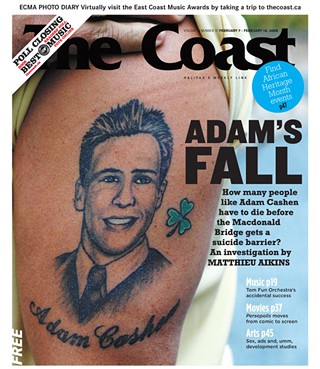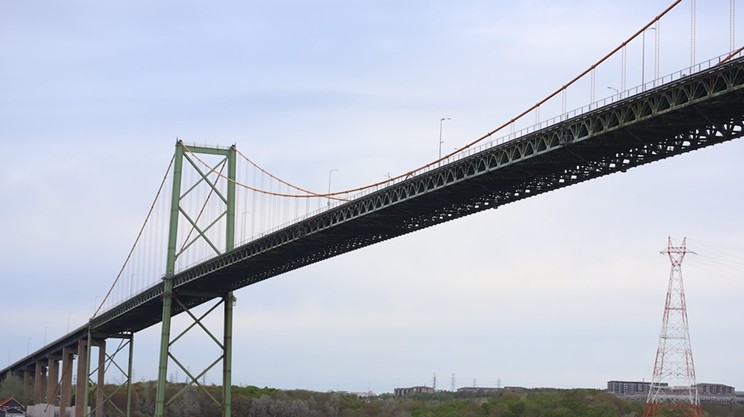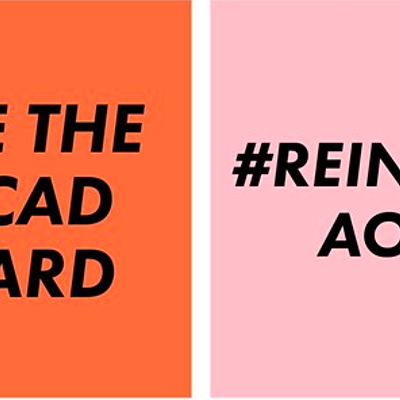Snider expects tenders for the project to go out in June, and work to commence by July.
Suicides from the Macdonald Bridge were the subject of Coast writer Matt Aikins' piece, "Adam's fall," for which Aikins won an Atlantic Journalism Award and has been nominated for two Canadian Association of Journalists awards, being announced May 23. As Aikins explained:
In August last summer [2007], workers completed a steel extension along the outer railings of the bicycle and pedestrian walkways of the Macdonald Bridge. Ten feet high, with an inward-curving top section, the barriers seem nearly impossible to scale. They run for 357 metres, out past the end of the Navy dockyards, before ending abruptly over the water’s edge---right about where Adam jumped. Beyond there, for the rest of the bridge's 1.3km span, nothing impedes the magnificent view from the walkway, both of Halifax Harbour and of the dizzying vertical drop below.The bridge commission reverses its long-standing opposition to building "safety barriers"---Snider refuses to call them "suicide barriers"--- because a recent "health analysis" of the bridge showed that it was stronger than previously believed, says Snider.This partial barrier is a result of a 2004 lawsuit, filed by the Department of National Defence, alleging that the bridge commission had reneged on a previous agreement to protect DND workers from falling objects. Steve Snider, the commission’s CEO, claims the barriers, which cost $500,000, are not intended to prevent suicides. "It's to protect people who work at the Department of National Defence from objects that are thrown or falling from the bridge,” he says.
Falling objects such as jumpers? “Yes,” says Snider. Indeed, court files relating to the lawsuit describe a number of documents relating to jumpers and property damage exchanged between the commission and the DND. (The commission denied a request for those documents.)
[...]
Snider says that while a partial barrier was feasible, a full-length one is not. “Based on the engineering that’s been done, we are not able to accommodate that type of weight on the entire structure,” he says. “This is a long-standing opinion.”
"As an organization and as a board," explains Snider, "we are comfortable putting up a safety barrier across the structure. From our perspective we were working with an engineering opinion that said we can’t do this, and then we had an engineering opinion that said, ‘well, you know, this is something that you could do over Department of National Defence [land],’ and it was in response to some ongoing safety concerns for their people working below. Once that was accomplished, it was simply natural for us to look at what else could be done."
Was the reconsideration of a barrier prompted by the publicity raised by The Coast's article?
"No," says Snider.
As part of Aikins' investigation, The Coast asked for a number of documents related to suicides from the bridge, including statistics, discussions of barriers and related topics. The bridge commission declined to turn those documents over, saying that increased publicity of suicides leads to signature bridges like the Macdonald becoming suicide destinations and actually increasing the number of suicides. The Coast counters that by raising the issue we are increasing public awareness of suicide as a concern that needs addressing with, for example, suicide barriers.
But now that the suicide barriers are going up, the potential for future suicides is presumably reduced to zero, so the "suicide attractor" issue is resolved. Given that, will the bridge commission now release statistics on past suicides?
"No," says Snider. "I won't talk about suicides."
The Coast has appealed to the Nova Scotia Freedom of Information and Protection of Privacy review office for intervention in our request for documents, and that appeal is now under consideration. We expect a ruling soon.


















